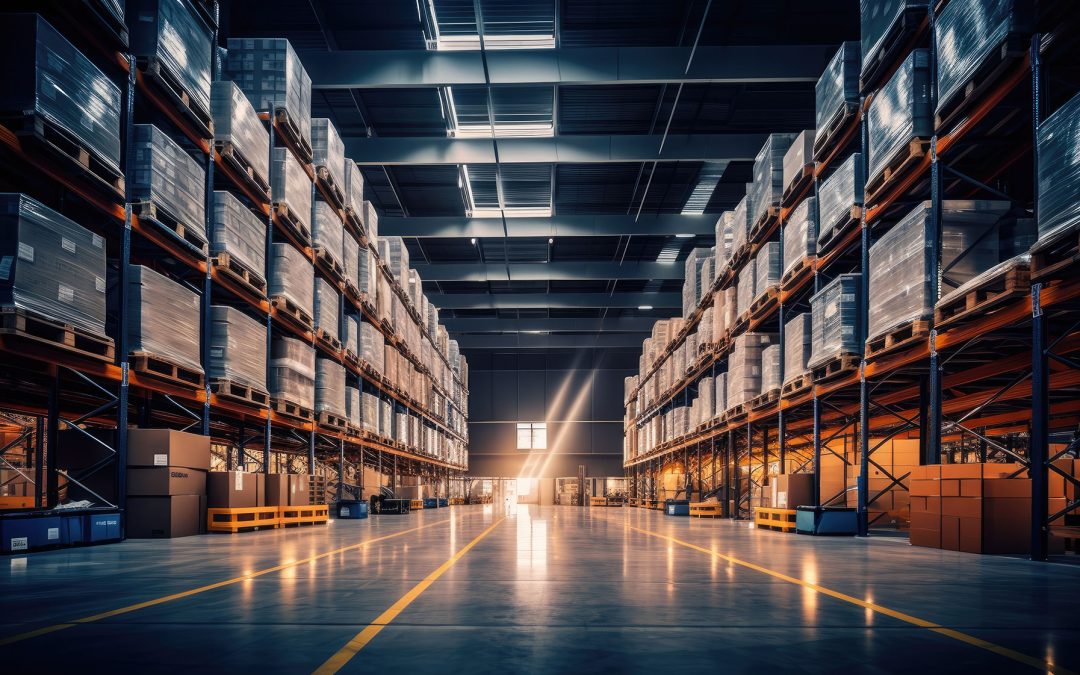Evaluate Current Warehouse Layout
Conduct a Space Audit:
Assess current warehouse layout and storage usage.
Identify underutilized areas and bottlenecks in workflows.
Map Inventory Flow:
Document how goods move through the warehouse, from receiving to shipping.
Identify inefficiencies in the flow that could be affecting space utilization.
Improve Warehouse Layout
Design Efficient Layouts:
Flow-Based Layout: Arrange workstations and storage areas to support a logical flow of goods.
Zone Designation: Create zones for different functions (e.g., receiving, storage, picking, packing) to streamline operations.
Optimize Aisle Widths:
Narrow Aisles: Consider narrower aisles if you have the right equipment and technology to support them.
Wide Aisles: Maintain wider aisles where heavy machinery or high traffic is expected.
Utilize Vertical Space
Install Racking Systems:
High-Bay Racking: Use high-bay racks to maximize vertical space, especially for large quantities of inventory.
Selective Racking: Opt for selective racking for easy access to all pallet locations.
Use Mezzanines:
Create Mezzanine Floors: Add additional floors for storage or operations to take advantage of vertical space.
Implement Advanced Storage Solutions
Dynamic Storage Systems:
Push-Back Racking: Use push-back racks for high-density storage and easy access to goods.
Flow Racking: Implement flow racks for high-turnover items to facilitate first-in, first-out (FIFO) inventory management.
Automated Storage Systems:
Automated Guided Vehicles (AGVs): Use AGVs for transporting goods within the warehouse.
Robotic Picking Systems: Invest in robots that can pick and transport items to optimize space and reduce labor costs.
Enhance Inventory Management
Adopt Inventory Management Software:
Warehouse Management System (WMS): Implement a WMS to track inventory levels and optimize storage locations.
Real-Time Tracking: Use barcoding or RFID systems for accurate and real-time inventory tracking.
Implement Inventory Strategies:
ABC Classification: Prioritize high-value or fast-moving items in easily accessible locations.
Just-In-Time (JIT): Reduce excess inventory and improve space utilization by synchronizing inventory levels with demand.
Optimize Picking and Packing Processes
Use Efficient Picking Methods:
Batch Picking: Pick multiple orders at once to reduce travel time and improve efficiency.
Zone Picking: Assign pickers to specific zones to streamline order fulfillment.
Design Effective Packing Stations:
Ergonomic Design: Create packing stations that are ergonomically designed to reduce worker fatigue and increase efficiency.
Consolidation Areas: Set up dedicated areas for consolidating items from different picks to streamline packing.
Leverage Technology
Implement Advanced Warehouse Technologies:
Artificial Intelligence (AI): Use AI for predictive analytics and optimizing storage and picking processes.
Internet of Things (IoT): Deploy IoT devices for real-time monitoring of inventory and equipment.
Optimize Space Utilization with Data:
Data Analytics: Analyze warehouse data to identify trends and areas for improvement in space utilization.
Simulation Software: Use warehouse simulation tools to model different layouts and storage configurations.
Train and Engage Staff
Staff Training:
Operational Training: Train staff on best practices for space utilization and handling.
Technology Training: Ensure employees are proficient in using any new technology or systems implemented.
Engage Employees:
Feedback Mechanisms: Encourage staff to provide feedback on space utilization and workflow.
Incentives: Offer incentives for suggestions that lead to improved efficiency and space use.
Regularly Review and Adapt
Conduct Periodic Reviews:
Space Utilization Audits: Regularly audit space usage and layout efficiency.
Performance Metrics: Track key performance indicators (KPIs) such as space utilization rates, order fulfillment times, and inventory turnover.
Adapt to Changes:
Scalability: Adjust warehouse layout and processes based on changing business needs and growth.
Flexibility: Be prepared to reconfigure space and processes as new products, technologies, or operational requirements arise.
Plan for Future Growth
Scalable Design:
Flexible Layout: Design the warehouse layout to be easily reconfigurable as business needs evolve.
Future Expansion: Plan for future expansion by designing spaces that can accommodate additional inventory or equipment.
Invest in Future Technologies:
Emerging Technologies: Stay updated on emerging technologies that can further enhance space utilization and warehouse efficiency.

